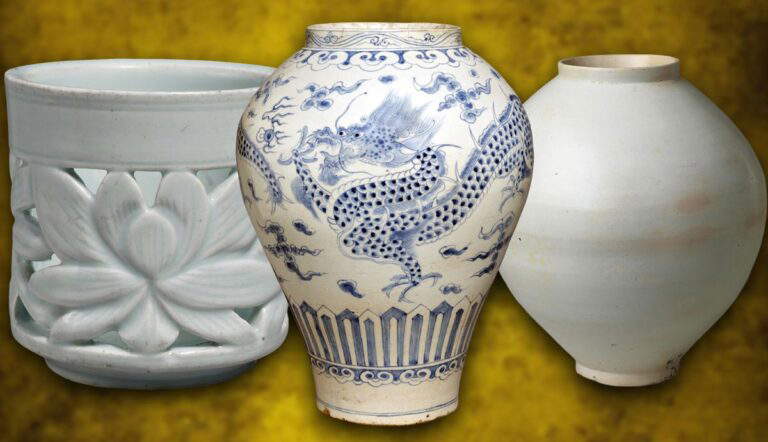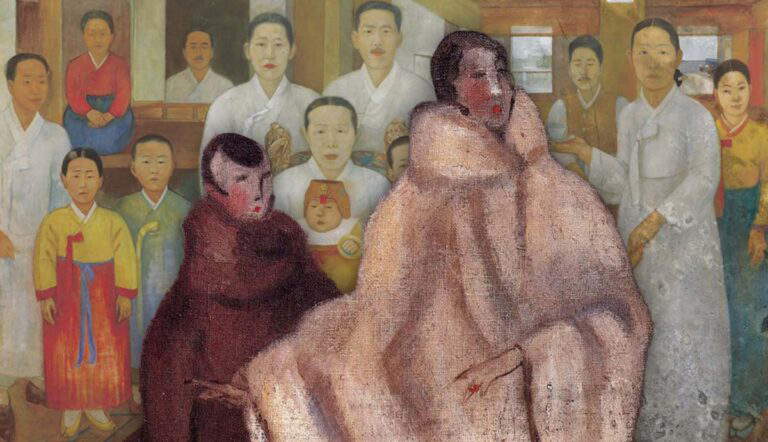
Daniella Romano
Daniella is an art historian and writer from London, UK. She holds an MA in Critical and Curatorial Studies of Contemporary Art from National Taipei University of Education and a BA in History and History of Art from the University of Nottingham. Her research interests include cartography and East Asian art, as well as the role of colonial narratives present in contemporary art. She also runs her own website, Artographic.
Articles by Daniella Romano
 Telling the Story of Korea’s Joseon Dynasty Through Porcelain
Telling the Story of Korea’s Joseon Dynasty Through PorcelainProduced during Korea’s Joseon Dynasty (1392-1897), its last and longest dynasty, Joseon porcelain reflects art, life, and societal values.
 How Did the Colonial Period Shape Modern Korean Art?
How Did the Colonial Period Shape Modern Korean Art?The Japanese Colonial Period (1910-1945) saw the development of Korean art according to Western standards — but how did Korean artists react to these changes?
The Japanese Colonial Period (1910-1945) saw the development of Korean art according to Western standards — but how did Korean artists react to these changes?
 Why Taiwan Is a Hidden Gem for Art Lovers
Why Taiwan Is a Hidden Gem for Art LoversThough it is rarely highlighted on travel itineraries, Taiwan is a treasure trove for anyone interested in art.
Though it is rarely highlighted on travel itineraries, Taiwan is a treasure trove for anyone interested in art.
 A Guide to the Best Historic Sites in South Korea
A Guide to the Best Historic Sites in South KoreaSouth Korea has many sites that embody stories of its past, from majestic stone parks to ocean-side temples.
South Korea has many sites that embody stories of its past, from majestic stone parks to ocean-side temples.
 How to Decode Goryeo Buddhist Paintings in Korean Art
How to Decode Goryeo Buddhist Paintings in Korean ArtRare Buddhist paintings from the Goryeo Period in Korean art can tell us much about the religion and society of the time.
Rare Buddhist paintings from the Goryeo Period in Korean art can tell us much about the religion and society of the time.
 Goryeo Celadon: The Famed Ceramics of Medieval Korean Art
Goryeo Celadon: The Famed Ceramics of Medieval Korean ArtHow did the development of celadon in Korean art encapsulate a huge shift in art and society during the Goryeo Period?
 The Silla Burial Mounds: Treasures of Korea’s Ancient Past
The Silla Burial Mounds: Treasures of Korea’s Ancient PastRevealing the secrets of Korea’s ancient past, burial mounds from its Silla Period (57 BCE - 935 CE) are treasure troves filled with unique and dazzling artifacts.
Revealing the secrets of Korea’s ancient past, burial mounds from its Silla Period (57 BCE - 935 CE) are treasure troves filled with unique and dazzling artifacts.
 Sea Monsters in Renaissance Maps: Tales From Unknown Waters
Sea Monsters in Renaissance Maps: Tales From Unknown WatersPopular perceptions regarding the mysteries of the deep and sea monsters are revealed within the cartography of Renaissance maps.
 How to Read Renaissance Maps (7 Tips)
How to Read Renaissance Maps (7 Tips)Despite their seemingly factual nature, Renaissance maps are considered significant art objects. How can we best read them to understand more about this period?
Despite their seemingly factual nature, Renaissance maps are considered significant art objects. How can we best read them to understand more about this period?